| |
Go west, but not too far, to see some spectacular Western art
By Tom Adkinson
March 12, 2021
Editor’s note: This is one in a series of travel stories spotlighting destinations and activities to consider in a time of coronavirus and to inspire safe outings elsewhere.)
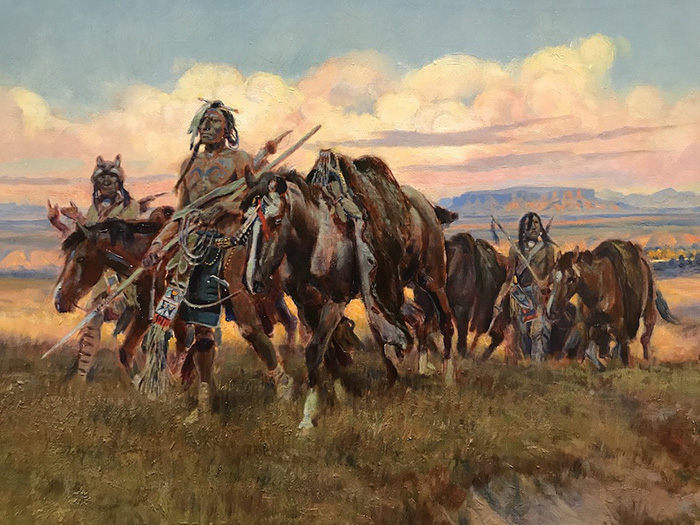
“In the Enemy’s Country” depicts an imagined scene built on the experience of Charles Russell. It is in the Frist Art Museum’s current exhibition. Image by Tom Adkinson. |
Go west, young man, and grow up with the country.
That famous comment, attributed at least in part to newspaper editor Horace Greely in the mid-1800s, resonates in the Southeast right now, at least slightly. You can go west without actually traveling very far by visiting three nearby places to soak in some glorious art. Two opportunities are permanent, and one is as fleeting as the wind across the open prairie.
The one with the short lifespan is in Nashville, and the other two are in Birmingham, Alabama, and Cartersville, Georgia. All are worth a visit, if only to stoke the fire of desire to “Go west, constrained traveler, and see a beautiful part of the country.”
In Nashville
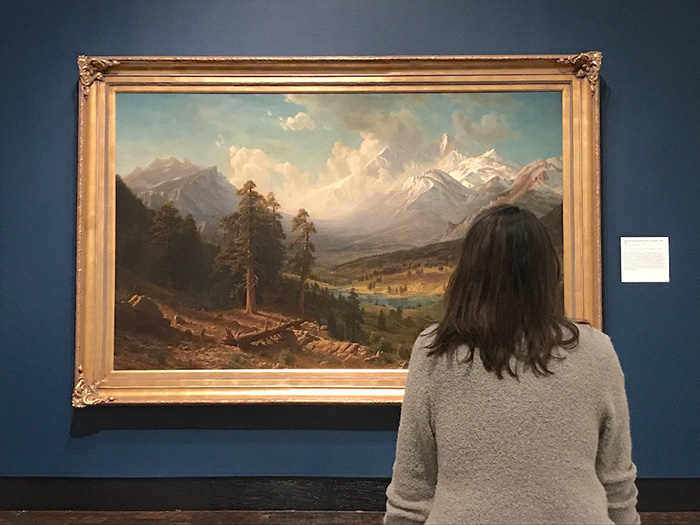
A Frist Art Museum visitor soaks in the grandeur of a panoramic scene painted by Albert Bierstadt. Image by Tom Adkinson. |
Nearly 80 paintings and sculptures spanning more than 120 years of art from the American West are featured in thought-provoking style at the Frist Art Museum through June 27. “Creating the American West in Art” is drawn from the Petrie Institute of Western American Art at the Denver Art Museum.
“This is visually stunning, perhaps because we’ve not seen very much art in person for the last year,” observed one curator, noting how the exhibition explores the complexity of the American West as explorers and then settlers moved across the continent.
Albert Bierstadt and Thomas Moran captured the grandeur of the landscape, naturalist and artist William Jacob Hays portrayed the physical characteristics of bison in a moody work called “Herd of Buffalo” and other artists depicted many aspects of Native American life.
The Frist invited Native Americans to write about some of the works, and their comments are a provocative aspect of the exhibition. For instance, Cherokee Albert Bender wrote about a visually appealing painting from around 1921. It shows Taos Pueblo Indians in northern New Mexico threshing wheat.
The scene is beautiful – puffy white clouds in a blue sky, towering mountains in the background, children at rest in the foreground, a huge mound of wheat in the middle – but there is a backstory. These Native Americans never farmed wheat until they adopted it in an effort to accommodate the forces that fundamentally changed their culture, Bender notes.
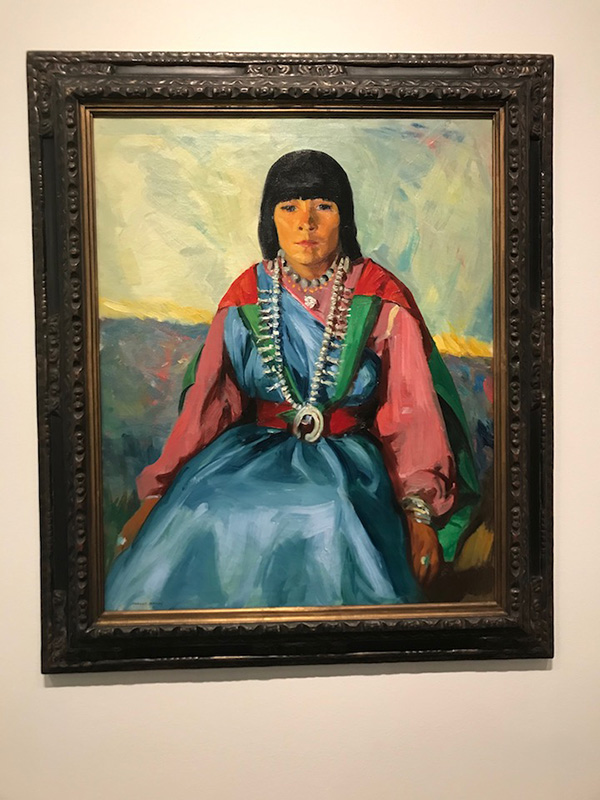
Robert Henri helped make Santa Fe, New Mexico, an art center with portraits such as this one of Tewa artist Tom Po Qui. Image by Tom Adkinson. |
In Birmingham
You’d be more likely to expect significant collections of art from the American West in Denver, Dallas and Oklahoma City than in Birmingham, but the Birmingham Museum of Art is widely known for its diverse holdings.
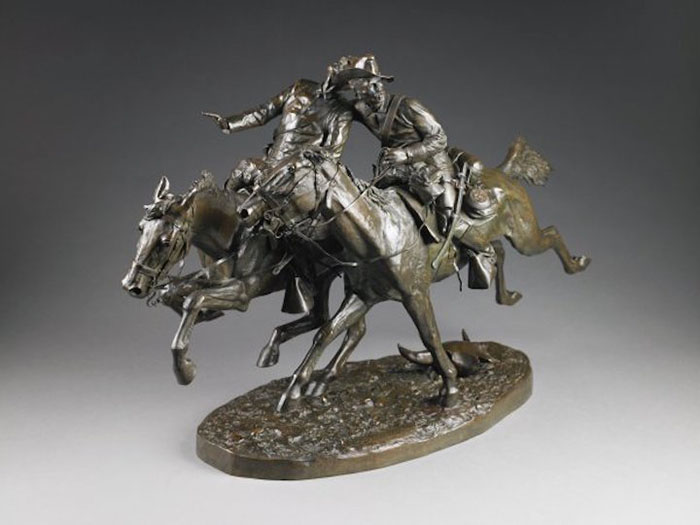
This bronze of Frederic Remington's "The Wounded Bunkie" is central to the Birmingham Museum of Art's collection of Western art. Image by Birmingham Museum of Art. |
In particular, it is famous for bronzes by Frederic Remington, the most important of which is the first cast of “The Wounded Bunkie” (1896). Another important piece is a rare cast of James Earle Fraser’s “The End of the Trail” (1918).
The museum has significant paintings from artists such as Eanger Irving Couse, Joseph Henry Sharp, DeCost Smith and William Louis Sonntag and a notable collection of graphic works by George Catlin, Remington, Charles M. Russell and Will Crawford.
The museum points proudly to Albert Bierstadt’s monumental painting “Looking Down Yosemite Valley, California” (1865), which led to subsequent collecting of artworks related to Yosemite and California. More recent additions include works by Native American artists, with a focus on contemporary artists.
In Cartersville
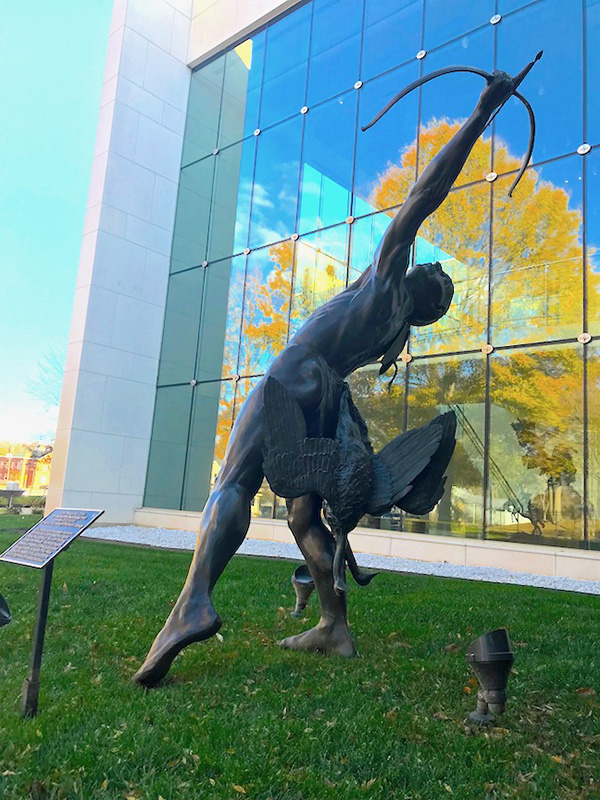
“In Search of the Snow Goose” by Fritz White is a prominent piece in the Booth Museum’s sculpture garden. Image by Tom Adkinson. |
The Booth Western Art Museum is the private collection of a benefactor who prefers to stay out of the limelight, but he made Cartersville the site of what the museum calls the world’s largest permanent exhibition space for Western art. That’s quite a claim for a tiny town off I-75 between Atlanta and Chattanooga.
An expansive outdoor sculpture garden complements 124,000 square feet inside the museum, which is a Smithsonian affiliate. You will find works by Remington and Russell and by numerous contemporary artists, too. More than 200 artists are represented through paintings, bronzes, photography and artifacts, some dating to the early 1800s.
Many pieces depict Native Americans. Two examples are a painted sculpture of Sacagawea and a highly detailed sculpture of two Ojibwa fur trappers paddling a fur-laden canoe.
“See the West without leaving the South” is a slogan the Booth Western Art Museum enjoys using, and that’s a sentiment that carries special meaning while everyone hopes the coronavirus fades away.
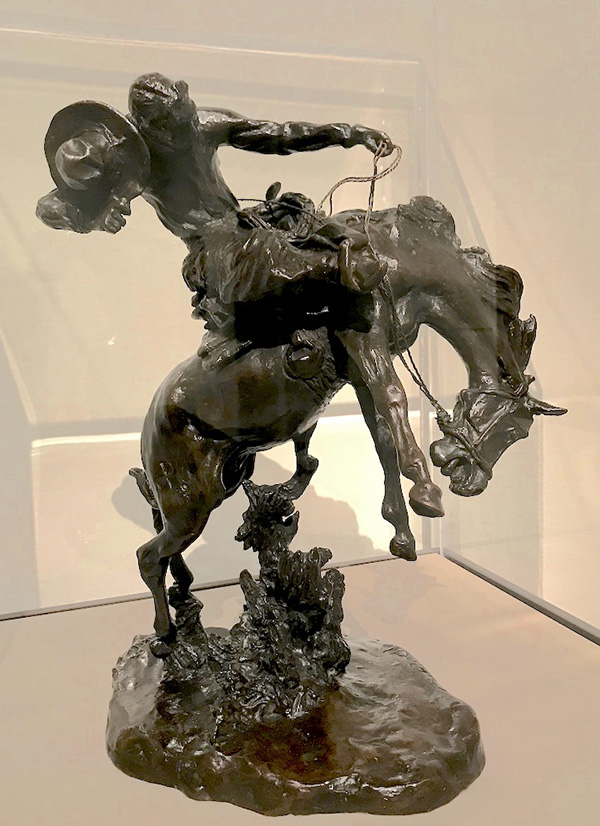
Bronc Twister (The Weaver) is a Charles Russell bronze now on display at Nashville’s Frist Art Museum. Image by Tom Adkinson. |
|

